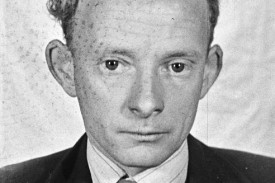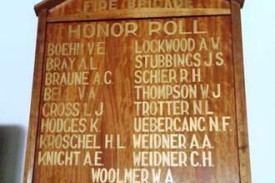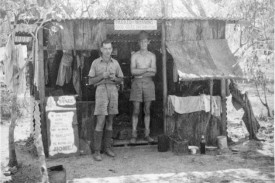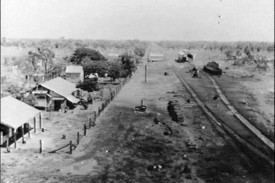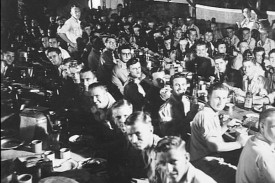General News
25 October, 2025
John Sangster Stubbings
John Sangster Stubbings was born in Natimuk on September 28 1917.
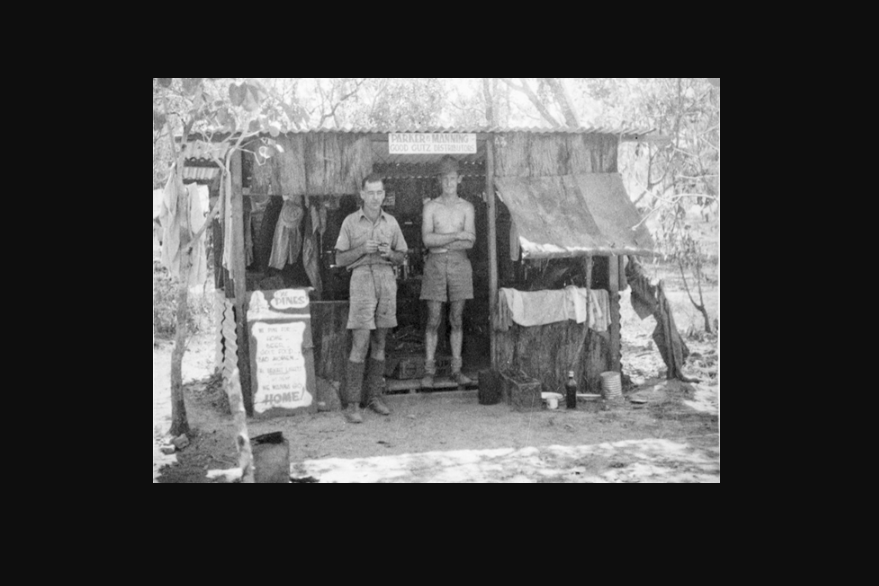
His parents were John Henry Stubbings and Catherine Sangster Brown.
He enlisted at in the RAAF at No 1 Recruiting Center RAAF, Melbourne, on September 10 1942 as an aircraftman.
John’s locality on enlistment was Natimuk.
His service number was 118280.
John’s rank was general hand, leading aircraftsman, class 1.
His training started in Trainee Group 5 at 1 Recruitment Depot at Shepparton, then he was posted for further training to 1 Embarkment Depot, Ascot Vale, on October 10.
By October 29 John was posted to Birdum in the Northern Territory, where No 11 Signals Unit RAAF as part of 55 Operational Base unit was based with an American evacuation hospital (135th Medical Regiment, United States Army).
John was serving at Hughes, NT, with 58 Operational Base Unit on November 4 1942.
On March 5 1943 he was at the same base in Darwin.
By May 9 58 Operational Base Unit had been moved to Drysdale Mission.
John was posted to 9 Replenishing Centre at Pell, NT, on July 17 1943.
Pell is 100km south of Darwin and 10km north of Adelaide River township on the Stuart Highway.
It had well-developed workshop stations and the camp housing more than 500 men.
Its taxiway was used to bring aircraft in for repair and servicing.
John was attached to 8 Mobile Works Squadron Melville Bay (8th Airfield Construction Squadron) from October 24 1943 to January 10 1944.
The army sank water bores and assembled facilities for a full-scale military move to Melville Island.
John served with 9th Replenishing Unit, which was responsible for a new equipment store, office administration hut, and fuel and bomb dumps at Melville and at Drysdale.
With the same unit he moved to 10 Mile, NT, on November 4.
There, tents were erected and construction work commenced on buildings, facilities and access roads.
John was at 1 Embarkment Depot, Melbourne Cricket Ground, on April 3 1943 before being posted to 1 Replenishing Center, Bacchus Marsh, on May 6 1944 (he was subsequently attached to 1 SD by June 6 1944).
In April and May 1944 members of this unit commenced the unusual task of rendering captured Japanese ordinance-safe.
Explosives were used for comparison and experimentation.
In the second half of 1944, stock was transferred from 7 and 8 Replenishing Centres to 1 Replenishing Centre at Bacchus Marsh when they closed.
At Bacchus Marsh life could be harsh.
The diet of troops included local mushroom and rabbits and there were severe water restrictions until January 1945.
Then, severe rain damaged roads and explosive storehouses as water seeped in.
While serving at 1 Replenishing unit, John was attached to 1 Stores Depot (1 SD) RAAF Sandridge on June 6 1944, which controlled 47 sites.
They stored clothing, barracks supplies and equipment.
Another store, 5 Stores Depot, had to be built.
John was posted to Fisherman’s Bend/Port Melbourne from June 21 to July 22 1944, then to 2 Personnel Depot, Bradfield Park, on November 10 for training.
He was posted to No 1 Reserve Personnel Pool Unit (1 RPP) at Weir, near Townsville, on December 5 but 1 RPP was relocated to Aitkenvale due to flooding.
In September 1944, 2337 personnel had arrived at 1 RPP and 2550 had departed on posting to units in North-Eastern Area, Northern Command, North-Western Area, 10 Operational Group and Southern Area.
These personnel had to learn the Malay language.
John was transferred to 10 Replenishing Center Nadzab, Papua New Guinea, by November 6 1945.
Nadzab Airfield was a large airfield complex.
On September 5 1943, combined airborne and over land operations had taken place at Nadzab.
By autumn 1944 combat had moved away from Nadzab and the airfield had become a large training, aircraft repair and salvage facility.
With the end of the war all serviceable stores were returned to Australia and the units were disbanding.
John was posted to 1st Tactical Airforce Labuan, Borneo, on November 10 1945.
On October 25 1944, 1st Tactical Air Force (TAF) RAAF had been formed.
It provided a tactical air force that would represent Australia within the Allied air forces for the advance against Japan in the Soth West Pacific Area.
John was posted to 1 Personnel Depot (PD) Royal Park on February 21 1946.
He was discharged from the RAAF on March 8 1946 from 1 ST TAF Headquarters.
John’s name appears on the Natimuk Urban Fire Brigade honour board.
For his service he received the 1935-45 Star, the Pacific Star, the Defence Medal, the War Medal 1939-45 and the Return of Active Service Badge.
With thanks: Sally Bertram, RSL Military History Library. Contact Sally at sj.bertram@hotmail.com or call 0409 351 940.
